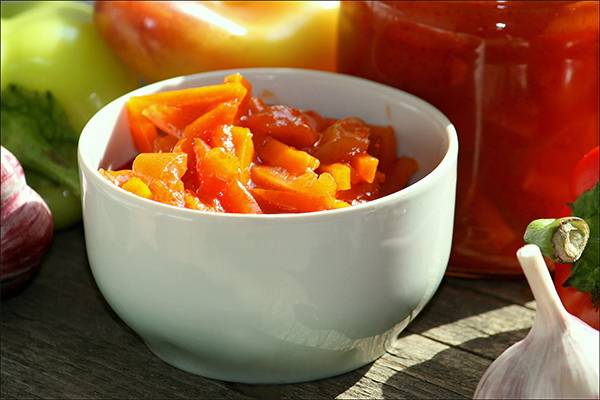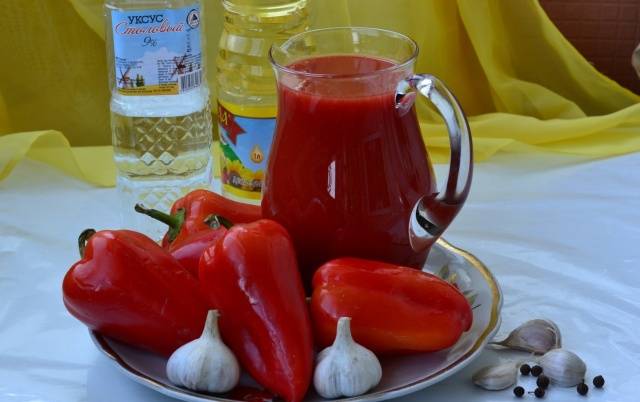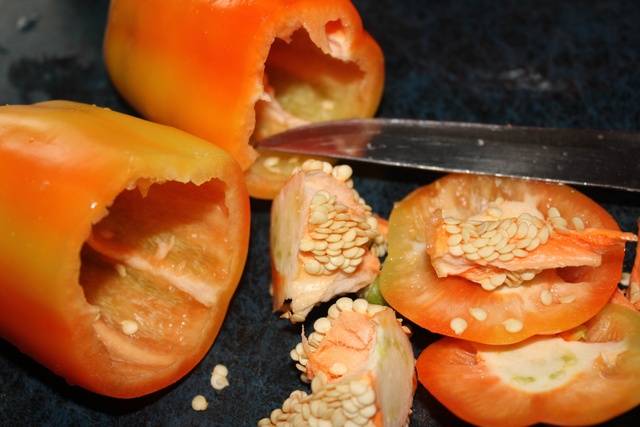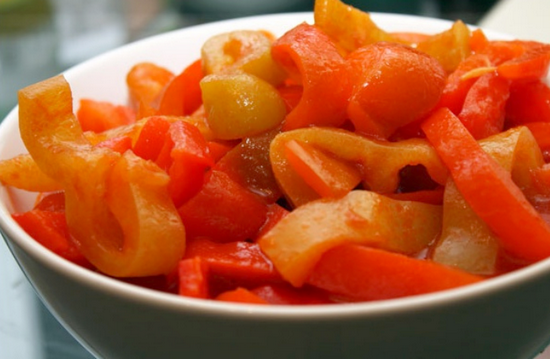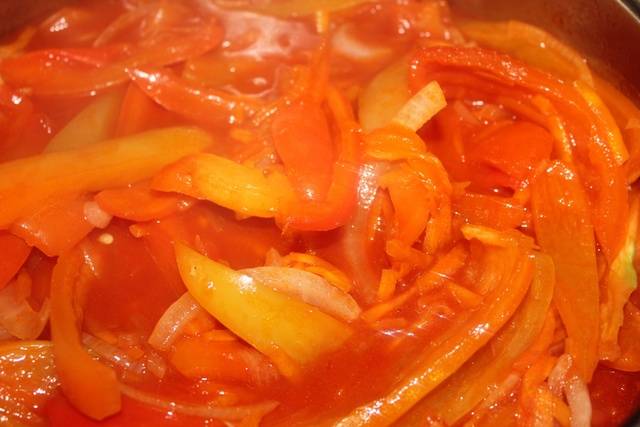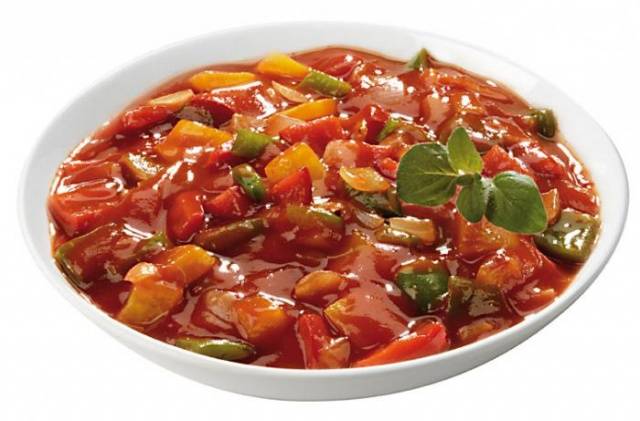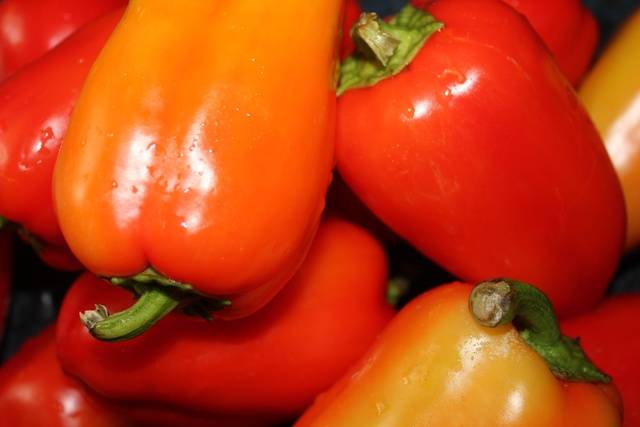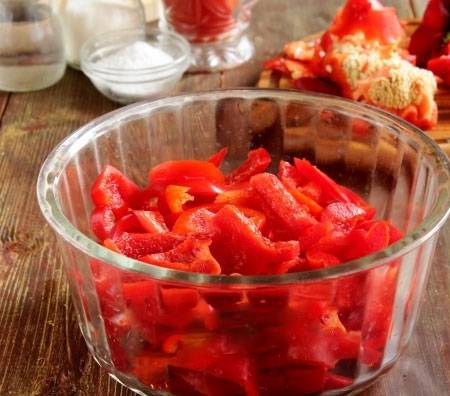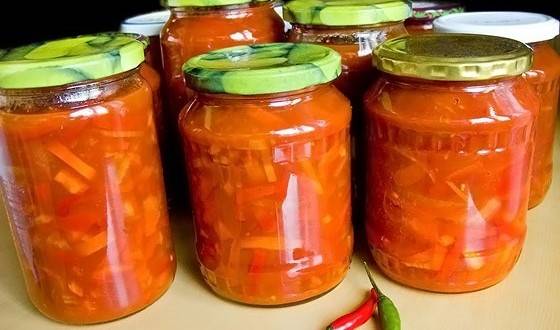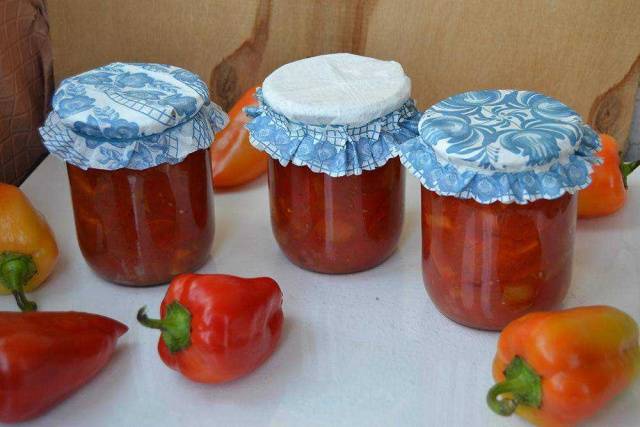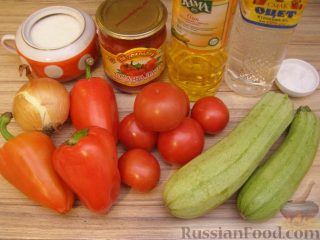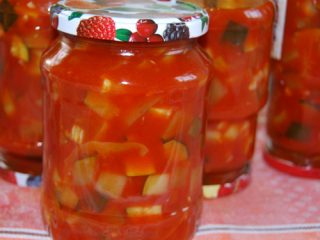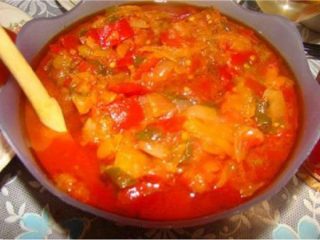Lecho is one of those dishes that few can resist, except that a person is allergic to tomatoes or bell peppers. After all, it is these vegetables that are fundamental in the preparation recipes. Although initially lecho came to us from Hungarian cuisine, its composition and recipes have managed to change sometimes beyond recognition. In the difficult climatic conditions of Russia, where winter sometimes lasts more than six months, lecho has turned into a fireworks display of stunning aroma and taste of autumn-summer vegetables and herbs seasoned with spices, based on the preferences of the hostess. And, of course, it is, above all, harvested in large quantities for winter storage in order to be able to enjoy its beauty, taste and aroma all year round.
If you have your own plot and tomatoes grow in large quantities on it, then, probably, you will make lecho from fresh vegetables. But many people prefer to cook lecho according to a simplified recipe, using freshly prepared or even commercial tomato juice. But lecho with tomato juiceDespite the simplicity of its preparation, it remains one of the most delicious varieties of this dish, prepared for the winter.
The easiest recipe
The recipe below is not only the easiest to prepare and the amount of ingredients used. In the lecho prepared according to this recipe with tomato juice, bell peppers retain their pleasant density and firmness, as well as a greater amount of vitamins, which is very important in the harsh winter time. Despite the fact that sterilization is not used during the preparation, the amount of vinegar in the marinade is sufficient to keep the preform well under normal storage conditions.
You only need:
- 3 kg of high quality bell peppers;
- 1 liter of tomato juice;
- 180 g granulated sugar;
- 60 g salt;
- Half a glass of 9% table vinegar.
It is very important to take fresh, juicy, preferably freshly harvested peppers for cooking, with fleshy, thick walls. It can be of any color. From red, orange, yellow peppers, you will get not only a tasty and healing, but also a very beautiful dish.
Tomato juice can be used commercially, or you can squeeze it out of your own tomatoes using a juicer.
According to this recipe, lecho with tomato juice for the winter should turn out to be about three liters of finished products.
First you need to wash and free the pepper fruits from seeds, stalks and internal partitions. You can cut the peppers in any convenient way, depending on your preferences. Someone loves cutting into cubes, someone - into strips or rings.
After cutting, pour the pepper in boiling water, so that all the pieces disappear under the water and leave to steam for 3-4 minutes.
You can prepare the marinade at the same time. To do this, stir the tomato juice with salt and sugar in a large saucepan with a thick bottom and bring everything to a boil. Add vinegar.
Meanwhile, discard the steamed pieces of pepper in a colander and shake off excess moisture. Gently pour the pepper from a colander into a saucepan with marinade, boil and boil with stirring for about 5 minutes. Lecho with tomato juice is ready. It remains only to immediately spread it out in pre-prepared sterilized jars and seal with lids. You do not need to wrap the jars so that the pepper does not become too soft.
Some housewives making bell pepper lecho with tomato juice according to this recipe, add 1 more head of garlic and 100 ml of vegetable oil to the ingredients.
Try to make lecho using both options, and choose the flavor that suits you and your family more.
Lecho "multicolored assorted"
This recipe for making lecho for the winter with tomato juice is also quite simple, but much richer in the composition of ingredients, which means that its taste will be distinguished by its originality and uniqueness.
What you will need to find:
- Tomato juice - 2 liters;
- Sweet bell peppers, peeled and chopped - 3 kg;
- Onions - 0.5 kg;
- Carrots - 0.5 kg;
- Dill and parsley greens - 100 g;
- Vegetable oil - 200 ml;
- Cumin - a pinch;
- Granulated sugar - 200 grams;
- Rock salt - 50 grams;
- Acetic essence 70% - 10 ml.
Peppers must be washed well, cut into two halves and all the inner contents must be cleaned from the fruit: seeds, tails, soft partitions. Peel the onion, wash the carrots and remove the thin skin with a vegetable peeler.
At the second stage of cooking, the pepper is cut into strips, the onion is cut into thin rings, and the carrots are grated on a coarse grater. Greens are washed, cleaned of plant debris and finely chopped.
All cooked and chopped vegetables and herbs are transferred to a large saucepan, filled with tomato juice. Salt, caraway seeds, vegetable oil and sugar are added. The saucepan with the future lecho is put on fire, and the mixture is heated until boiling bubbles appear. After boiling, lecho must be boiled for another ten minutes. Then vinegar essence is added to the pan, the mixture is boiled again and immediately laid out in hot sterilized jars. After capping, turn the cans upside down for self-sterilization.
Lecho without vinegar
Many people do not tolerate the presence of vinegar in the workpieces. Of course, you can advise to use in such cases citric acid or another substitute for vinegar, but the problem usually lies in the intolerance of any acid in winter preparations. A way out of this situation can be found if you use a recipe for lecho prepared in tomato juice without vinegar, but sterilized for the winter. Below is a detailed description of the features of the manufacture of such a blank.
It is better to prepare the juice from tomatoes for this preservation yourself in order to be completely confident in its quality. There are two main ways to make it:
- The first is the simplest one - using a juicer. The ripe, sweetest, preferably fleshy tomatoes are selected and passed through a juicer. If you don't have a juicer, you can grind the tomatoes with a meat grinder.
- The second method is used in the absence of any kitchen appliances. For this, the tomatoes are cut into small pieces, having previously cut out the attachment point to the branch, and laid out in a flat enameled container. After adding a little water, put on a small fire and stirring constantly, cook until completely soft. After cooling a little, the resulting mass is rubbed through a sieve, thus separating the skin and seeds.
About one liter of tomato juice is obtained from one and a half kilogram of tomatoes.
Pepper is washed and cleaned of all that is superfluous. Cut into pieces of a convenient size and shape. For one liter of tomato juice, one and a half kilograms of peeled and chopped bell peppers should be prepared.
Tomato juice is placed in a saucepan, brought to a boiling point. Then add 50 grams of salt and sugar to it and add chopped bell pepper on top. The mixture is gently mixed, heated to a boil and boiled for another 15-20 minutes.
While the lecho is being prepared, the jars must be sterilized, and the lids must be boiled for at least 15 minutes. The finished lecho must be put in a prepared glass dish so that the tomato juice completely covers the peppers. You can sterilize lecho in boiling water, but it is more convenient to use an airfryer for these purposes.
In boiling water, half-liter jars are covered with lids on top and sterilized for 30 minutes, and liter jars - 40 minutes.
In the airfryer, the sterilization time at a temperature of + 260 ° C will take no more than 10 minutes. It is also possible to sterilize jars with lids, but from the latter it is necessary to pull out the sealing gum during sterilization in order to avoid their damage.
If you decide to sterilize at a temperature of + 150 ° C, then one liter cans will require 15 minutes of sterilization. Moreover, at this temperature, the gum from the lids can be left on.
After sterilization, the finished lecho is sealed, turned upside down and cooled.
Here are just the basic recipes for making lecho with tomato juice. Any hostess, taking them as a basis, will be able to diversify the composition of lecho to her taste.
